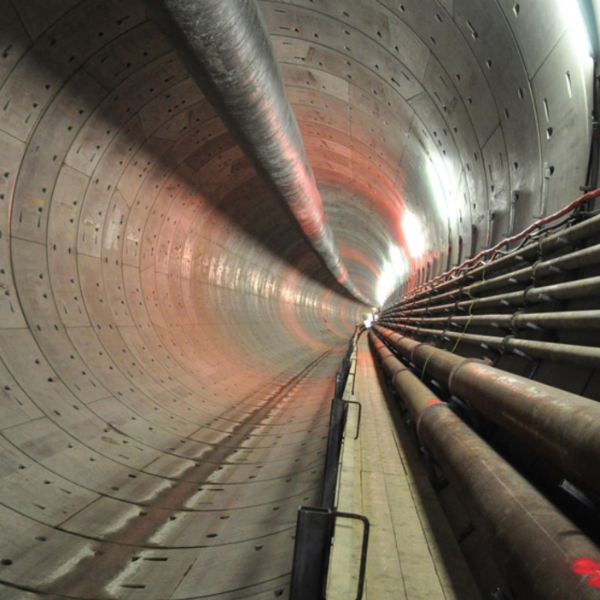Upward, cross-section and longitudinal analyses - Rupel tunnel

Upward, cross-section and longitudinal analyses - Rupel tunnel
The Flemish Waterways Maritime Canal department started the final structural deepening phase of a section of the Brussels - Scheldt Maritime Canal in 2013. The aim is to optimise shipping between Brussels and Antwerp including offering canal access to vessels up to 10,000 gross registered tonnage (GRT).
Brussels - Scheldt Maritime Canal deepening
The Rupel tunnel was constructed in 1972 and opened to road traffic between Antwerp and Brussels in 1982. At approximately 1,650 m long, this tunnel comprises two three-lane motorways and a 595 m closed section. As well as the two tube road tunnels, the closed section contains a narrow central escape and installation tunnel. The section beneath both the Rupel and maritime canal is immersed and the cut-and-cover section between this was constructed in-situ.
As deepening the maritime canal involves removing the ground on top of the tunnel, which distorts the vertical stability of the immersed tunnel, further investigation was needed to determine whether it was possible to deepen the canal at the immersed tunnel.
Upward, cross-section and longitudinal analyses based on original design
As the aim was to deepen the canal to a water depth of 9.5 m over a width of at least 25 m, TEC - a Witteveen+Bos and Royal Haskoning DHV joint venture - was contracted to conduct upward, cross-section and longitudinal analyses based on the original design documents. The purpose was to determine the impact of the canal deepening on the tunnel’s structural integrity.
The survey enabled us to validate the analyses by comparing the calculated distortion with recent subsidence overviews. We also produced a riverbed dredge design, which optimised the tunnel roof and riverbed protection.
Placing a protective layer over the tunnel prevents currents and shipping creating scour holes next to the tunnel, and prevents tunnel roof damage caused by anchoring vessels. When deepening the canal, a new protective layer needed to be installed at a deeper level and located closer to the roof. That is why we developed various solutions during the design phase, based on analyses of existing and future shipping.
Inspection tunnel used to determine repair measures
The survey showed that the expected subsidence would lead to additional rotations in the tunnel wall’s leaking segment joints, which led us to further investigate the cause of the leak. We used this investigation to advise Flemish Waterways on how to brief contractors on carrying out the repairs and to determine the alert values. This enabled us to guarantee safety while the works were being implemented.
Tunnel system maintenance advice
Many existing tunnels require maintenance, which involves replacing and upgrading tunnel systems. A maintenance period is the perfect time to inspect critical components and repair any damage.
Witteveen+Bos advises public authorities on the measures needed to ensure that tunnels both meet current safety standards and have an increased service life. Within the TEC consortium, Witteveen+Bos has advised various clients on the renovation of various tunnels in the Netherlands, including the Piet Hein tunnel, Michiel de Ruijter tunnel, Arena tunnel and the Eerste Heinenoord tunnel.
More Information?

Our projects
Every year we work on almost 5,000 projects on water, infrastructure, environment and construction.
